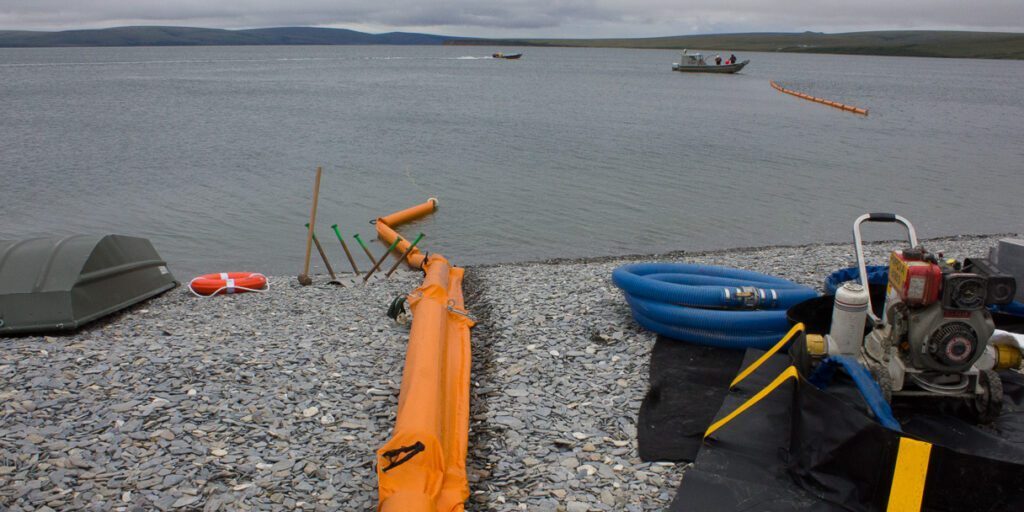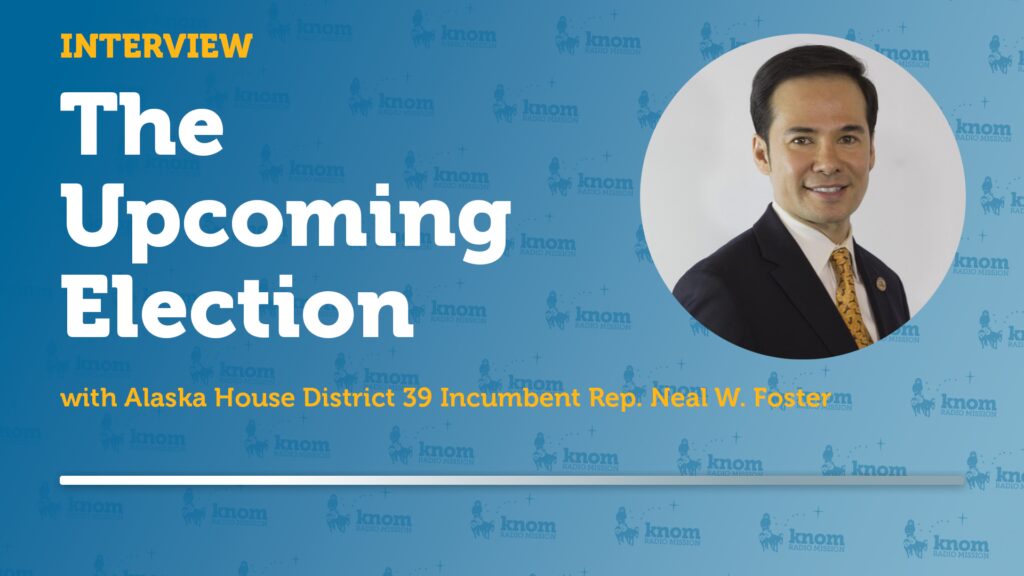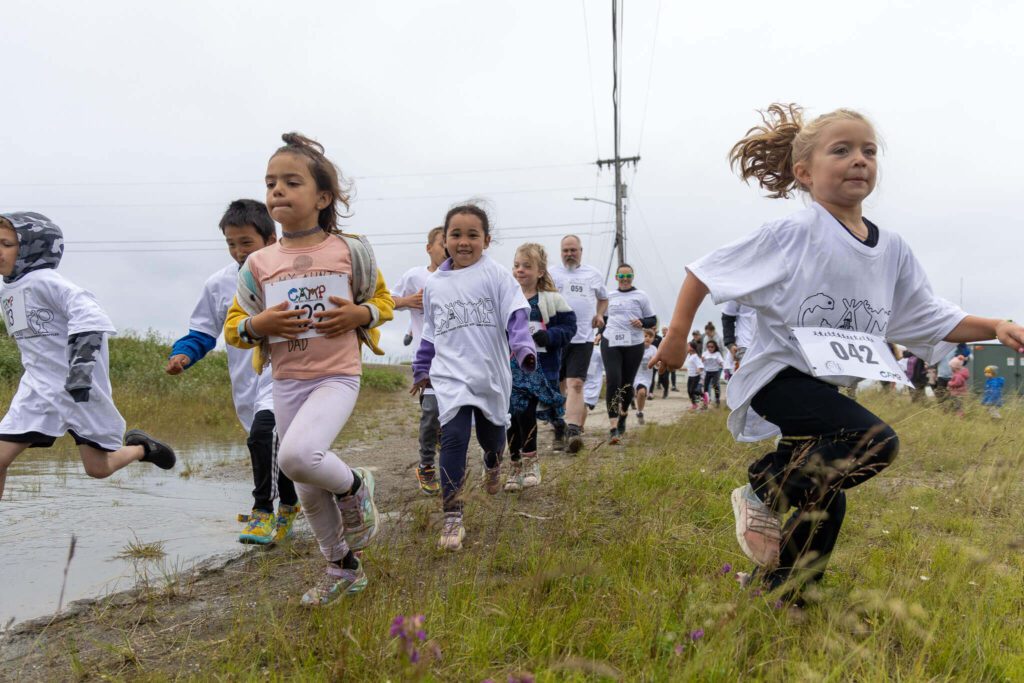The first spill response drill conducted by the state, fuel shippers, and cleanup crews in the Bering Strait has given a measure for how much is still unknown about handling to oil spills in the region.
Representatives from the Department of Environmental Conservation and the Coast Guard worked with Alaska Chadux, a company paid to handle cleanup in case of a spill, on a drill run this week in Teller. The exercise wrapped up Thursday morning over breakfast in Nome with a debrief about what worked, and what planners still need to figure out. John Katula with DEC summed up the collective sentiment.
“We started putting this together over two years ago now, and from our standpoint we see a lot of benefit that came out of this,” Katula said as coffee mugs clinked around the table. “Does anyone see it differently? Did we miss the boat anywhere on this?”
The consensus was no–everyone agreed the drill was a positive, although recommendations were offered for future improvements. DEC will sort through the data they collected with Chadux and revise plans that are currently on the books.
Colin Daugherty manages Chadux’s response capabilities, and was candid that even when things didn’t work during the drill they were important lessons on how to improve.
“When we got there early, ya know, the conditions that we saw just didn’t–I just didn’t feel right putting people at risk there,” Daughtery said, recapping his take on the day’s exercise. “We sure looked at it and scratched our heads, and we have a couple alternatives. And keep in mind we also varied from our plan and we did more of a demonstration at times of what we could do.”
Like most other Oil Spill Response Organizations working in Alaska, Chadux has most of its equipment and personnel in Anchorage. They rely on a model storing caches of equipment in hub communities like Nome that can be deployed relatively quickly in case of an accident.
Chadux General Manager Matthew Melton says getting to actually see and experience conditions is essential, because even basic logistical components like roads present unanticipated challenges.
“That was something that didn’t occur to me until I was driving the road yesterday,” Melton explained. “If it was rainy and washed out and we put, ya know, 20, 30 tractor trailers going back and forth on their trips, that road’s gonna get beat up.”
Another point repeatedly raised is the need to work more closely with Bering Strait residents, whether leaders in small communities, or people in Nome who know about local conditions. Jacob Okbiok works for the Teller Native Fill business, and says the reason more people there didn’t turn out to observe the drill is they aren’t in town right now.
“It’s usually around this time of year when everybody’s at camp, and maybe around first of August is usually when everybody comes back,” Okbiok said by the water of Teller’s inner harbor. “It’s kind of, you could say,[an] oddish time to chose to do an oil spill response.”
Those are the kinds of things you might not know if you’ve never been to the region, and the ones organizers of Wednesday’s drill wanted to find.
The exercise in Teller did not answer many questions about how an oil spill in one of the most remote parts of the state will be handled. For example, while Teller has a road for rigs to haul equipment to, the rest of the 14 communities in the region do not. And though weather was rough enough to scramble plans for organizers, the water was ice-free with decent visibility–conditions that can’t be counted on most of the year. Still, response planners are starting from almost zero when it comes to figuring out oil spills in the area.
For now, they’re taking the first steps to figure out what exactly they don’t yet know.







